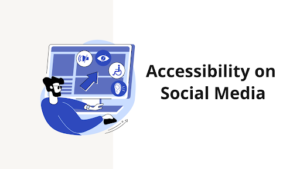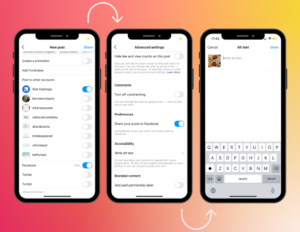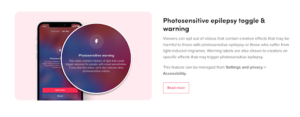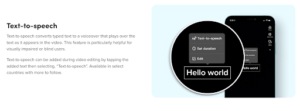Accessibility on Social Media

Gone are the days when we as marketers think of content as one-size-fits-all. We have to remember that users are people and they come in all shapes and sizes, with different needs, and require different assistive technologies.
Social media consists of a network of people coming from all over the world and from all walks of life. So why shouldn’t our content and campaigns cater to everyone?
Accessibility On Social Media Apps
Content should be accessible to a diverse range of users by addressing barriers and including ways for people to engage with your posts. This includes people with disabilities. Specifically, those who may be deaf/hard of hearing and blind may benefit from certain formats such as closed captions, alternate text, and audible screen readers. Today, many, if not all, apps offer a wide range of features to help make content accessible to all users.
Instagram, for example, offers tools and features that allow you to include them in your posts. You can access alt text in the ‘advanced settings’ section when posting a new piece of content. The text should include a detailed description of what is shown in the image or photo. The purpose is to help those who are visually impaired understand the context of the post. This should also be practiced in copy as well as closed captions for videos.

The same can and should be done for other platforms such as Twitter and Facebook.
Search Engine Optimization
Not only should your captions include your call-to-action and other attention-grabbing text, but they should also include a description of the asset. This is especially useful for SEO so the right audience can find and discover your brand or business. TikTok encourages its users to be as descriptive as possible in the caption of their videos so they can be discoverable on the search page and to help the algorithm learn the type of content they post.
TikTok and Accessibility
TikTok, in particular, does a great job of maintaining accessibility on its platform; allowing an array of users to enjoy what it has to offer. Here are a few of the features they’ve launched with accessibility in mind:
Photosensitive video warnings so people who suffer from epilepsy, for example, can skip a video that may have flashing lights or effects.

Text-to-speech that reads the closed caption out loud as the video’s audio plays.

These are a few of the many features TikTok offers its users to provide an inclusive community of users to engage and enjoy the content put out.
Making Your Marketing Content Accessible and User-friendly
As you put together your marketing plan and social media campaigns for your business, take into consideration these accessible features and how you can use them to make your content accessible. This will not only make these kinds of shared spaces welcoming for your own audience and consumers but can also increase brand visibility and improve discovery.
If you’re looking to expand your content offering to be more inclusive for those with disabilities but unsure on where to start, we are offering a free 30-minute consultation where we’d be happy to share best practices and discuss how we can help get your editorial content in shape for all your consumers. Click on the link above to schedule your appointment.
Check out our articles on social media analytics and social listening:




